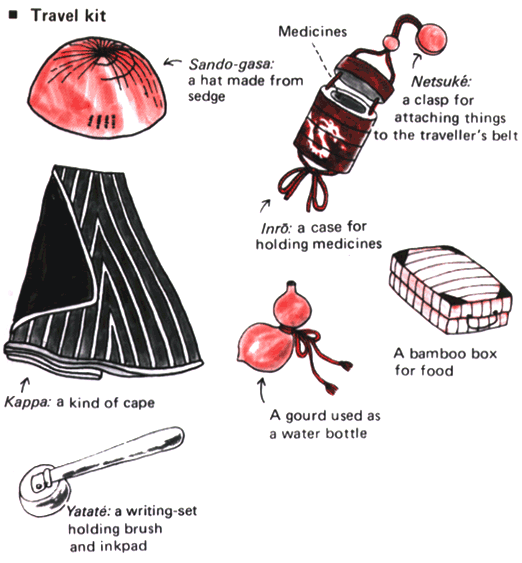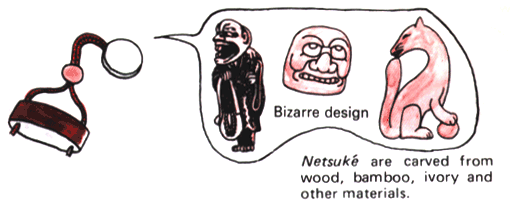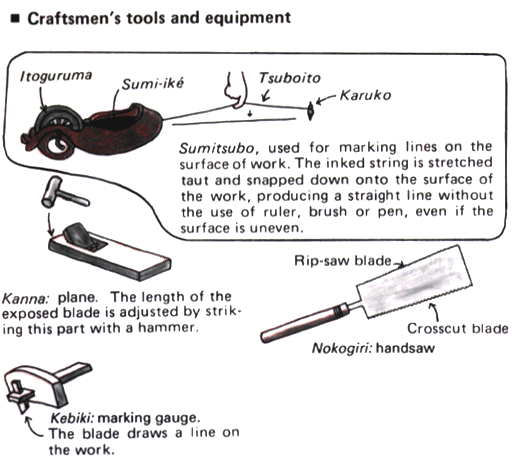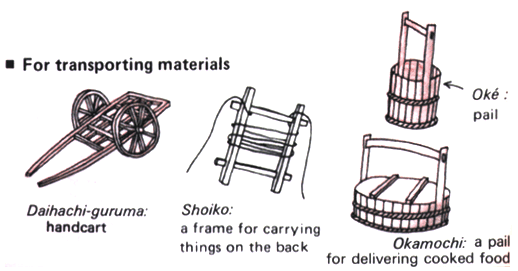Japanese Folk Art Crafts
"Folk art encompasses art produced from an indigenous culture or by peasants or other laboring tradespeople. In contrast to fine art, folk art is primarily utilitarian and decorative rather than purely aesthetic. Folk Art is characterized by a naive style, in which traditional rules of proportion and perspective are not employed". (source: Wiki)
 Folk Art Crafts, JNTO
Folk Art Crafts, JNTO
"As a phenomenon that can chronicle a move towards civilization yet rapidly diminish with modernity, industrialization, or outside influence, the nature of folk art is specific to its particular culture. The varied geographical and temporal prevalence and diversity of folk art make it difficult to describe as a whole, though some patterns have been demonstrated". (source: Wiki)
"Netsuke (根付) [netsɯke] are miniature sculptures that were invented in 17th-century Japan to serve a practical function (the two Japanese characters ne+tsuke mean "root" and "to attach")". (source: Wiki)
"Traditional Japanese garments—robes called kosode and kimono—had no pockets; however, men who wore them needed a place to store their personal belongings, such as pipes, tobacco, money, seals, or medicines. Their solution was to place such objects in containers (called sagemono) hung by cords from the robes' sashes (obi). The containers may have been pouches or small woven baskets, but the most popular were beautifully crafted boxes (inrō), which were held shut by ojime, which were sliding beads on cords. Whatever the form of the container, the fastener that secured the cord at the top of the sash was a carved, button-like toggle called a netsuke". (source: Wiki)
 Folk Art Crafts, JNTO
Folk Art Crafts, JNTO
 Folk Art Crafts, JNTO
Folk Art Crafts, JNTO
 Folk Art Crafts, JNTO
Folk Art Crafts, JNTO
 Folk Art Crafts, JNTO
Folk Art Crafts, JNTO
 Folk Art Crafts, JNTO
Folk Art Crafts, JNTO
"Netsuke, like the inrō and ojime, evolved over time from being strictly utilitarian into objects of great artistic merit and an expression of extraordinary craftsmanship. Such objects have a long history reflecting the important aspects of Japanese folklore and life. Netsuke production was most popular during the Edo period in Japan, around 1615–1868. Today, the art lives on, and some modern works can command high prices in the UK, Europe, the USA, Japan, and elsewhere. Inexpensive yet faithful reproductions are available in museums and souvenir shops". (source: Wiki)
 Folk Art Crafts, JNTO
Folk Art Crafts, JNTO
"As a phenomenon that can chronicle a move towards civilization yet rapidly diminish with modernity, industrialization, or outside influence, the nature of folk art is specific to its particular culture. The varied geographical and temporal prevalence and diversity of folk art make it difficult to describe as a whole, though some patterns have been demonstrated". (source: Wiki)
"Netsuke (根付) [netsɯke] are miniature sculptures that were invented in 17th-century Japan to serve a practical function (the two Japanese characters ne+tsuke mean "root" and "to attach")". (source: Wiki)
"Traditional Japanese garments—robes called kosode and kimono—had no pockets; however, men who wore them needed a place to store their personal belongings, such as pipes, tobacco, money, seals, or medicines. Their solution was to place such objects in containers (called sagemono) hung by cords from the robes' sashes (obi). The containers may have been pouches or small woven baskets, but the most popular were beautifully crafted boxes (inrō), which were held shut by ojime, which were sliding beads on cords. Whatever the form of the container, the fastener that secured the cord at the top of the sash was a carved, button-like toggle called a netsuke". (source: Wiki)
 Folk Art Crafts, JNTO
Folk Art Crafts, JNTO
 Folk Art Crafts, JNTO
Folk Art Crafts, JNTO
 Folk Art Crafts, JNTO
Folk Art Crafts, JNTO
 Folk Art Crafts, JNTO
Folk Art Crafts, JNTO
 Folk Art Crafts, JNTO
Folk Art Crafts, JNTO
"Netsuke, like the inrō and ojime, evolved over time from being strictly utilitarian into objects of great artistic merit and an expression of extraordinary craftsmanship. Such objects have a long history reflecting the important aspects of Japanese folklore and life. Netsuke production was most popular during the Edo period in Japan, around 1615–1868. Today, the art lives on, and some modern works can command high prices in the UK, Europe, the USA, Japan, and elsewhere. Inexpensive yet faithful reproductions are available in museums and souvenir shops". (source: Wiki)










